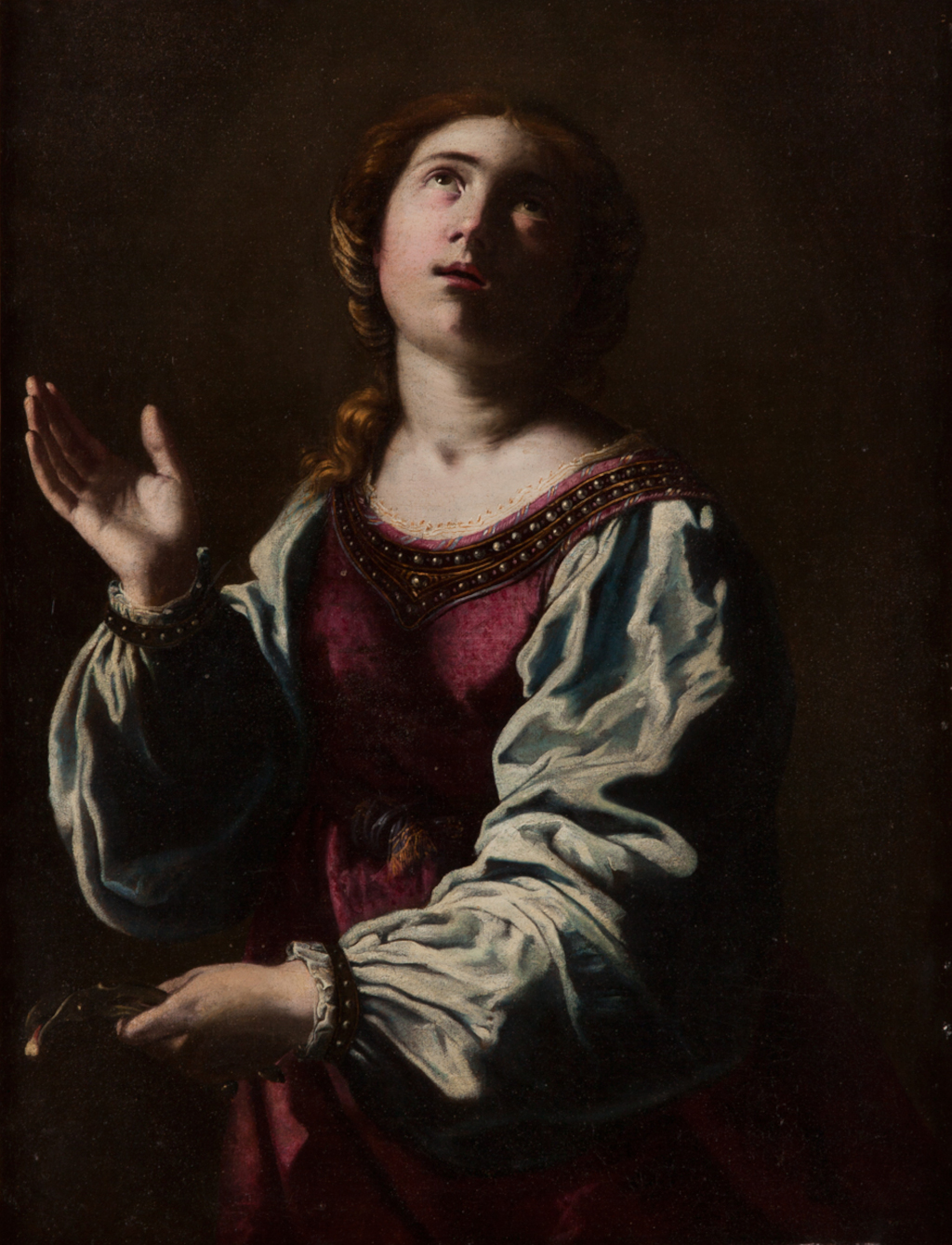This simple but elegant portrait of Saint Apollonia was completed by Artemisia Gentileschi in around 1642-1644, placing it right towards the end of her artistic career.
The style and layout of this piece is entirely consistent with a number of paintings confidently attributed to this artist, such as in the masterly handling of the drapery of this model, as well as the darkened background. Saint Apollonia was another example of how her oeuvre expanded during the 20th century, as more artworks were finally attributed to her name.
We must remember that the artist was unfairly treated by the art world for a number of years after her death, with collectors attributing some of her work to male artists in order to boost the value of each piece. Thankfully, some of the wrongs have been corrected in recent years and it is fair to say that there remains much more for us to learn about Artemisia Gentileschi and the true extent of her artworks.
Who is Saint Apollonia?
Saint Apollonia was, sadly, subjected to horrendous torture having been captured during an uprising in Alexandria, AD 249. She had all of her teeth forcibly removed as a punishment and this led to her becoming known by many as the patronness of dentistry. She has been featured in a number of paintings, sculptures and stained glass window designs by European artists, with an interpretation by Francisco de Zurbarán being perhaps the most famous of all.
Description
The portrait by Artemisia Gentileschi features the saint with her right hand with an open palm, reaching upwards, seemingly in search of help and support. Her other hand holds some tweezers, which connects to the gruesome tale of when and how her teeth were removed. The artist chooses not to depict that bloody scene here, and Saint Apollonia is presented in a respectful manner.
The saint is wearing a two-tone dress, made from thick material. Her sleeves are in a grey tone, and this lighter colour, as compared to the purple torso, helps to display more of the variations in light due to the rolls of material. Artemisia had mastered drapery many years earlier and it was one of her strengths as a portrait painter.
The artist left the background entirely black, ensuring that there were no distractions from the focal point of the piece, and also helping the tones of the foreground to stand out even more. We see much here that summarises her overall career, in terms of content and artistic style, the culmination of years of study and experience.
A closer study of the piece reveals a series of pearls inserted into the neckline, as well as some lightly coloured jewellery which runs across the model's chest. There are also some darker bracelets on her wrists, perhaps with some stones added to them as well. Her hair is also in curls, and runs down on one side of her head. The dramatic use of lighting makes some elements harder to spot.
Size, Medium and Location
Saint Apollonia by Artemisia Gentileschi is dated to around 1642–1644. It is located at the Museo Soumaya in Mexico City. It was produced using oil on canvas, and measures 89 cm in height by 72 cm in width.
Large Image
We have included a larger image of the painting below, offering a little more of the original detail added by Gentileschi all those centuries ago. Particular interest should be given to the touches of drapery down the model's left sleeve, which is executated to a high level. Also, the posture of her face, looking upwards, is continued in a number of other Gentileschi portraits.
 Saint Apollonia
Saint Apollonia




